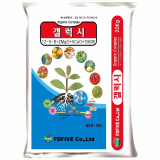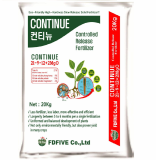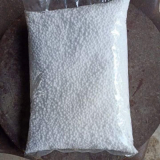Organic Fertilizer (Amino Bass)
Negotiable Min Order Quantity Unit
- Required Quantity
-
- Place of Origin
- Payment Terms
- Negotiable
- Production method
- Negotiable
- Shipping / Lead Time
- Negotiable / Negotiable
- Keyword
- fertilizer, amino bass
- Category
- Organic Fertilizer
Tae Won Enterprise
- Verified Certificate
-
12


| Product name | Organic Fertilizer (Amino Bass) | Certification | - |
|---|---|---|---|
| Category | Organic Fertilizer | Ingredients | - |
| Keyword | fertilizer , amino bass | Unit Size | - |
| Brand name | - | Unit Weigh | - |
| origin | Stock | - | |
| Supply type | - | HS code | - |
Product Information
Amino Bass - Characteristics of the Products
1. Environmentally friendly organic material made of “Bass” which is destructing ecosystem under the water.
2. Using only the organic natural material, therefore, safe from antibiotics and heavy metals.
3. The bass contains much minerals such as calcium, phosphorus and zinc, which is good material for fermentation, In addition, the bass contains low fat and has less possibility for rancidity.
4. Fast acting products and being absorbed directly into crops as it has water-soluble nutrients and already been disassembled by microorganisms.
No need to worry for soil residual after spraying as it is water soluble.
5. By poliar application of the leaves, the amino acid immediately absorbed into leaves and help the growth of crops. It also assist improving the quality of crops and increase sweetness of fruit.
6. It assist crops to recover from stress as it is rich in beneficial microorganisms to facilitate the activation of plant disease resistance, and prevention of physiological disorder.
7. It attributes to make leaves thicker and contribute greater resistance to illness, flood and wind damage.
8. The amino acid in the product, and organic acid being produced during the manufacturing process, will increase the activity of the physiology of crops.
Increase of fruits (Tomato)
|
Compare Sample
|
Diluted by 500 times
|
Diluted by 700 times
|
Diluted by 1,000 times
|
|
|
No. of Fruit
|
28.8
|
35.95
|
37.95
|
36.35
|
|
Average(%)
|
100
|
124.8
|
131.8
|
126.2
|
Increase in leaf area of lettuce
|
Compare |
Liquid Fertilizer Treated/diluted by 500 times
|
Liquid Fertilizer Treated /diluted by 700 times
|
Liquid Fertilizer Treated /diluted by 1000 times
|
|
|
Sample
|
||||
|
Area
|
13041.88
|
15028.81
|
15985.76
|
15369.01
|
|
Average(%)
|
100
|
115.2
|
122.6
|
117.8
|
Increase the weight of leaves
|
Compare Sample
|
Liquid Fertilizer Treated/diluted by
500 times |
Liquid Fertilizer Treated/diluted by
700 times |
Liquid Fertilizer Treated/diluted by
1000 times |
|
|
Weight
|
5.43
|
7.66
|
7.60
|
7.01
|
|
Average(%)
|
100
|
141
|
133.9
|
129
|
(The experimental results, Kangwon National University, College of Agriculture and Life Sciences)
The reason why crops need amino acid
1. The amino acids of microbial degradation enzymes have all the nutritional ingredients evenly. Amino acid bulky produced by acid or alkali will broken its structure and decrease the rate of essential amino acid such as histidine, phenylalanine, tyrosine, tryptophan, and proline.
In addition, in case of the vegetable amino acid, the content ratio does not fit well as it is the residue after extracting taste agent amino acid.The animal amino acid decomposed by microorganism contains 18 kinds of essential amino acids evenly.
2. Improve Cultivation of Crops. The process of making amino acid from the nitrogen absorbed by roots is skipped, and the energy saved from this process omission will be used as the growth and fruiting. Amino acid will be absorbed from the foliar application of fertilizer, and will be delivered to long distance quickly.
3. To be used as natural trace elements. Amino acid will embrace various trace elements and minerals in natural way and being absorbed. And its delivering speed is much faster than that of chelate-chemical treated trace element fertilizers.
4. Natural pH adjuster. Amino acids does not produce dramatic acid-base reaction. When fertilizing, it does not give stress on crops, thus advantageous both for the management of soil and crops.
Individual Effect of Amino acid
|
The effect of Amino Acid
|
Relevant Amino Acid
|
|
Rooting, growth promoting
|
Lysine, Leucine, Glutamine, Serine
|
|
Enhancement of sweetness and acidity
|
Aspartic acid, Glutamine, Alanine, Glycine, Serine, Histidine, Threonine
|
|
Increase the flavor of fruits
|
Valine, Leucine, Arginine
|
|
Improve fruit color
|
Leucine, Alanine, Isoleucine
|
|
Pathogen inhibition, antibacterial
|
Leucine, Glutamine, Phenylalanine, Arginine
|
|
Prevent stress, help the formation of pulp
|
Proline, Methionine
|
|
The material containing sulfur promotes protein synthesis and wound healing
|
Methionine, Cystine,
|
|
Strengthen the immune system, promote disease resistance
|
Tyrosine
|
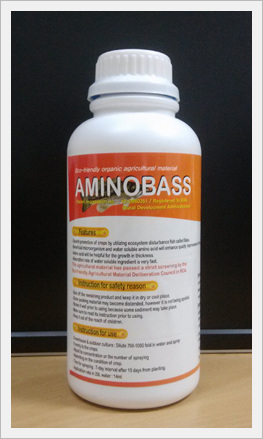
The Effect of Organic Acid to the Crops and Soil
1. The organic acid eliminates the accumulated salts. Various organic acids will make the residual nutrients in the soil into water-soluble state.Particularly, phosphate salt accumulation will be cleared to some degree by organic acids alone.
2. Helps the absorption of beneficial trace elements and prevent harmful trace elements and stress. It helps rapid absortpion as it act as natural chelate agent for zinc and iron, but activates protective effect to the aluminum that accumulated in the soil and prevent root descending of crops.
3. Helps crops to spread roots to ground.It activates the microorganisms symbiotic with roots of crops. The activated soil microbials will secrete growth hormones such as auxin and cytokinin, and will help root colonization and fine roots formation.
4. Prevent damages from disease.Many papers produced in late 2000s tell that organic acid have the effect of preventing eggplant, tomato, and etc. from fusarium wilt, pythium and other diseases. Acetic acid is known to partly prevent mildew from spreading roots.
5. Prevent the formation of aflatoxin which is know to be a food poisoning of crops. Various organic acids greatly hiders the growth of fungi that produce aflatoxin.
6. Relieve stress and lack of oxygen for wet rice. The organic acid such as malic acid, formic acid, and acetic acid greatly alleviate the stress of wet rice from the lack of oxygen.
7. Maximize the nutrient transfer efficiency when worked with amino acid. It shows rapid effect of absorbing not only amino acid but also trace elements when works with the amino acid of natural chelate.
How to use the product and Precautions
Based on the area of 0.5 a
|
Classification
|
Dilution Rate
|
Quantity Applied(Ltr.)
|
Spraying Cycle
|
|
|
Fruits & Vegetables
|
Growing seedling
|
1,000
|
0.5
|
7-10 days
|
|
The main paddy irrigation
|
500-700
|
1~0.7
|
7-10 days
|
|
|
The main paddy foliage dressing
|
150-200
|
1
|
7-10 days
|
|
|
After fruiting season
|
500
|
1
|
5-7 days
|
|
|
Leafy Vegetables
|
Growing seedling
|
1,000
|
0.5
|
7-10 days
|
|
The main paddy irrigation
|
500-700
|
1~0.7
|
7-10 days
|
|
|
The main paddy foliage dressing
|
150-200
|
1
|
7-10 days
|
|
|
After fruiting season
|
500
|
1
|
5-7 days
|
|
|
Rootcrops
|
Growing seedling
|
1,000
|
0.5
|
7-10 days
|
|
The main paddy irrigation
|
150-200
|
1
|
7-10 days
|
|
|
After fruiting season
|
500
|
1
|
5-7 days
|
|
*Cautions
1) Do not keep in frozen storage.
In case of keeping in frozen storage, the number of microorganisms contained will be significantly reduced.
2) However, the water-soluble components such as amino acid will not be affected.
3) Do not eat. (This product is not edible)
4) The expiration date is two years from the date of manufacture. (Room temperature storage)
5) Especially for fruits and vegetables, dilution rate to be accurately respected. (The fruits of thinner skin such as tomato, may cause a heat fever damage)
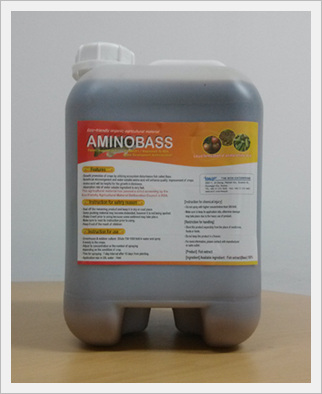
Ingredient Analysis Table
|
Description
|
Per 100g edible portion
|
||||||||
|
Energy (kcal)
|
Protein (g)
|
Fat (g)
|
Carbohydrates
|
Ash (g)
|
Minerals
|
||||
|
Carbohydrates (g)
|
Fiber (g)
|
Ca. (mg)
|
P. (mg)
|
Fe. (mg)
|
|||||
|
Flatfish(Flounder)
|
98
|
20.4
|
1.7
|
0.3
|
0
|
1.3
|
53
|
199
|
1.6
|
|
Mackerel
|
174
|
20.2
|
10.4
|
0
|
0
|
1.3
|
26
|
232
|
1.6
|
|
Sebastes hubbi
|
94
|
16.3
|
2
|
2.7
|
0
|
2.2
|
56
|
154
|
4.1
|
|
Masou salmon
|
111
|
20.3
|
3.3
|
0.1
|
0
|
1.7
|
21
|
253
|
2
|
|
Trout
|
120
|
21.1
|
3.9
|
0.1
|
0
|
1.6
|
33
|
246
|
1.8
|
|
Crucian carp
|
89
|
18.1
|
1.8
|
0.1
|
0
|
1.1
|
56
|
193
|
2.4
|
|
Bluegill
|
79
|
17.8
|
0.8
|
0.2
|
0
|
1.2
|
36
|
226
|
1.4
|
|
Catfish
|
109
|
15.1
|
5.3
|
0.1
|
0
|
1.1
|
26
|
190
|
0.8
|
|
Mandarin fish
|
106
|
17.2
|
4.1
|
0
|
0
|
1.1
|
71
|
202
|
2.1
|
|
Eel
|
213
|
14.4
|
17.1
|
0.3
|
0
|
1.1
|
157
|
193
|
1.6
|
|
Pollock
|
76
|
17.5
|
0.7
|
0
|
0
|
1.5
|
109
|
202
|
1.5
|
|
Squid
|
90
|
19.5
|
1.3
|
0
|
0
|
1.7
|
25
|
273
|
0.5
|
|
Carp
|
107
|
17.5
|
4
|
0.3
|
0
|
1.3
|
50
|
225
|
1.4
|
|
Leather Carp
|
169
|
16.8
|
11.2
|
0.3
|
0
|
1.2
|
37
|
197
|
1.2
|
|
Bass
|
82
|
18.2
|
0.4
|
0.1
|
0
|
1.2
|
88
|
245
|
4.5
|
B2B Trade
| Price (FOB) | Negotiable | transportation | - |
|---|---|---|---|
| MOQ | Negotiable | Leadtime | Negotiable |
| Payment Options | Negotiable | Shipping time | Negotiable |
- President
- Sun-Phil, Kang
- Address
- 478 Ji-dong, Paldal-gu, Suwon -si, Gyeonggi-do, Korea
- Product Category
- Energy Saving & Fluorescent
- No. of Total Employees
- 1-50
- Company introduction
-
Welcome to Tae Won Enterprise home page.
Founded on January 1, 1997, Tae Won enterprise is an international trading company which is exporting and importing based on the principle of integrity, diligence and trust.Especially, competitive price, good quality and delivery on time are our great advantage and also our fundamental force to respond to changing international environment. We are also confident that our many various experiences in the field of exporting and importing business can satisfy all of our customers all over the world.
We promise to make an constant effort with our best ability to create benefit to both of us, if we are given the opportunity to do business for export and import with you.
- Main Product


































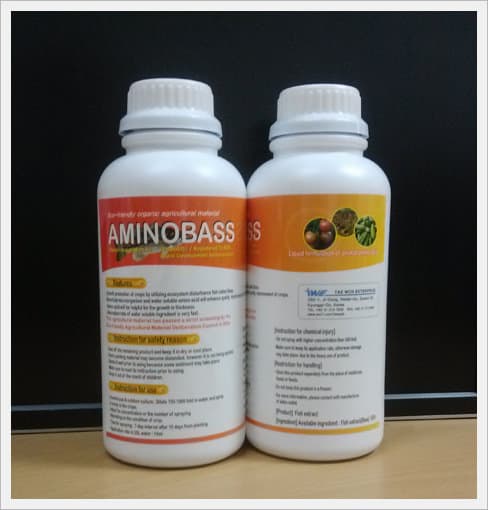
 South Korea
South Korea



